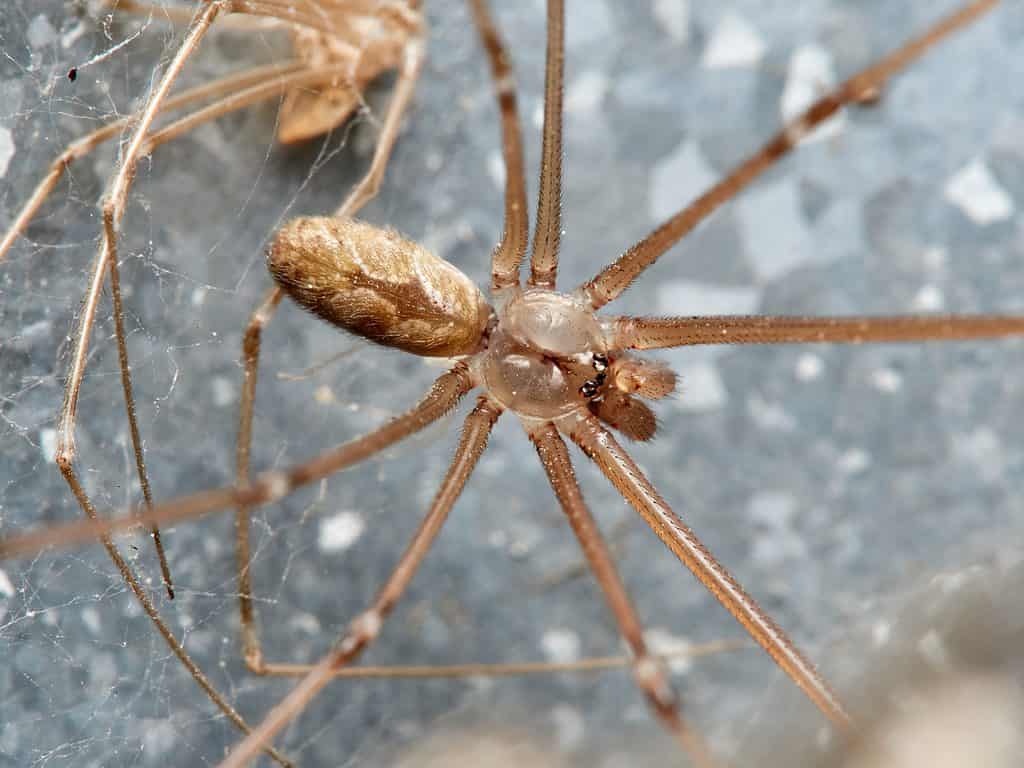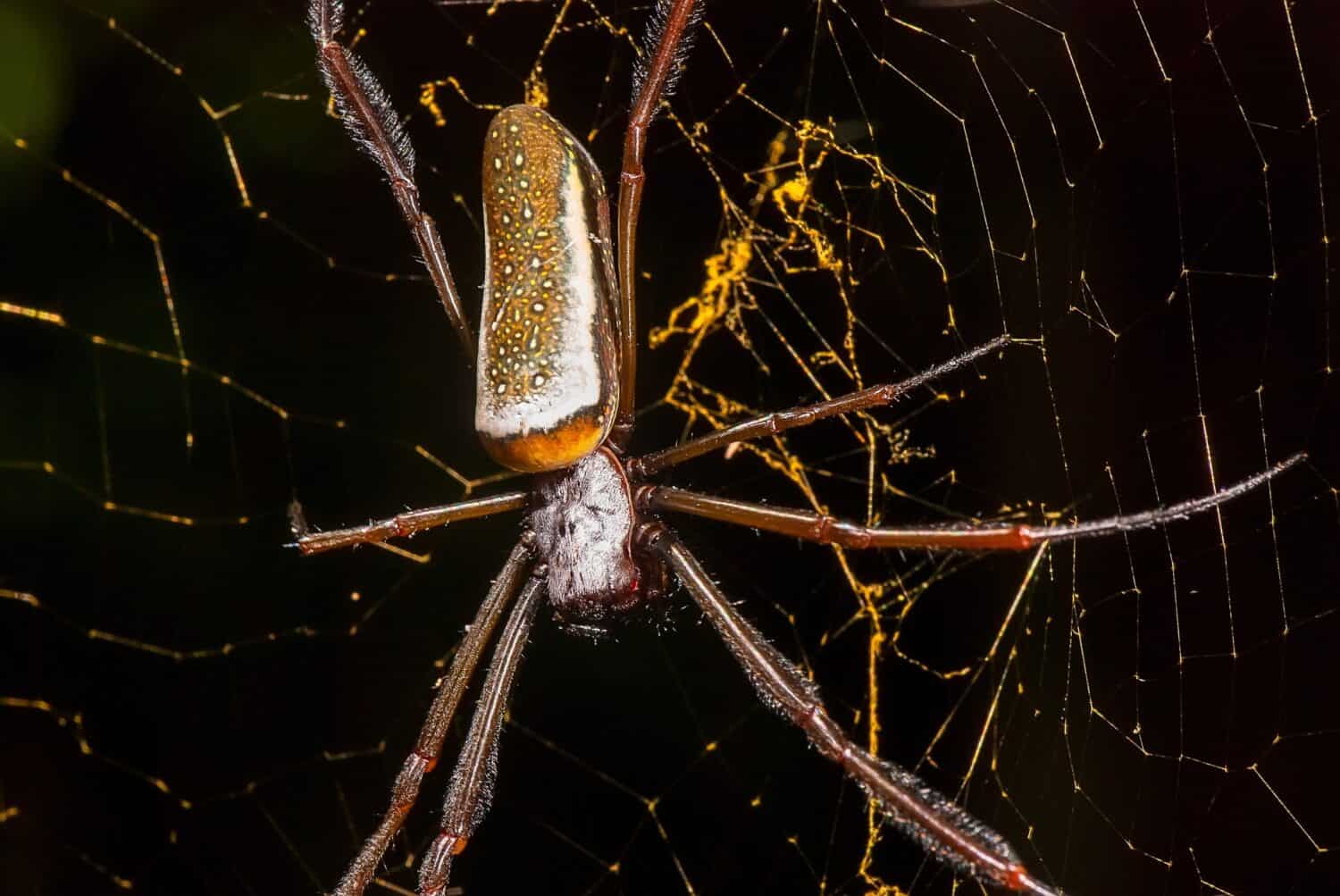Spiders live on nearly every continent of the world. With over 50,000 species recognized, they have quite a diverse habitat. A variety of different spider species reside in forests around the world. However, the Atlantic Forest in South America is heavily infested! It has the highest diversity of spiders of any forest, according to a 2020 study.

©vitormarigo/Shutterstock.com
The Atlantic Forest
Within South America, the Atlantic Forest lies in Brazil. It’s only a small fraction of the size of the Amazon Rainforest. However, it has a similar amount of biological diversity. In fact, it forms around 7% of the world’s known species with many of these species endemic to the land. The Atlantic Forest extends from the coast of Brazil to Rio Grande Norte, northeast to the Rio Grande do Sul state, and all the way inland to Paraguay and Selva Misionera. This is a semi-deciduous forest, and one of the 36 hotspots for biodiversity conservation in the world.
The Atlantic Forest consists of approximately 15 eco regions, including coastal forests, mangroves, and subtropical rainforests. These are all regions where spiders inhabit, and a number of species call the Atlantic Forest their home. Even though it’s a smaller forest, the high biodiversity is incredibly rich. The area has diverse ecosystems. Aside from the forest’s impressive number of plant and animal species, the Atlantic Forest boasts around 1,000 species of spiders!
The forest’s ecosystem receives around 2000mm of annual rain with no dry season. The summer months range from September to March. Various vegetation, such as arboreal and herbaceous stratum, compose the forest. Some of the trees in the Atlantic Forest can reach 42 meters high, while over vegetation like grass and shrubs only reaches a few inches.
With such a diverse ecosystem, it is clear why the forest is a favorable place for thousands of spider species. However, intensive production systems such as pine plantations have replaced a large percentage of the forest. Habitat loss from deforestation can impact these spiders and the forest’s diversity, making conservation important.
Spiders in The Atlantic Forest

©Macronatura.es/Shutterstock.com
Since not Scientists do not know much about the spiders in the Atlantic Forest, studies that detail the functional biodiversity of 259 spider species can be helpful for future researchers. It allows them to record the state of a component of functional diversity and estimate any changes that occur.
While most spider-related studies on the Atlantic Forest focus on the composition of species, this study focused more on two datasets that may help give researchers a better understanding of the spider species in the forest. These two datasets consisted of ecological and morphological traits, along with phenology information. Some of the spider species sampled for this study include the species of Pholcidae, which is a family of araneomorph spiders. This family consists of spiders such as the carpenter, skull, and daddy-long-legs. There is also a variety of orb weaver spiders in the Atlantic Forest.
How Did Researchers Collect the Spiders for the Study?
Researchers collected the various male and female spiders during the wet and dry seasons from two habitats, the native land and the pine plantations. They used methods such as pitfall, Winkler, and entomologic vacuuming for each of 259 species. Once captured, the 951 individual spiders were then preserved in a concentration of 80% alcohol, counted, and then identified by researchers using taxonomic literature.

©Leonardo Mercon/Shutterstock.com
So, what did the study find? Let’s take a look below.
Morphological Traits
Researchers photographed the spiders and analyzed them with software that transforms pixels into millimeters. This makes it easier for researchers to identify the morphological traits of the spiders and is quite useful in situations like this. These morphological traits included things like the spider’s body size, ocular distance, and femur length.
Ecological Traits
The ecological traits included prey range, foraging strategy, substrate preference, and circadian activity. The spider’s prey range included either a euryphagus or stenophagous diet, depending on the species, and preferred either the ground or upper vegetation and substrate. In some cases, the spider preferred both of these places to forage for food.
The study also found that around 34% of the spider species would share the native forest and pine plantations rather than sticking to one site.
The post Discover the Most Spider-Infested Forest in the World appeared first on AZ Animals.
from Animal News, Facts, Rankings, and More! - AZ Animals https://ift.tt/wfEdpTL